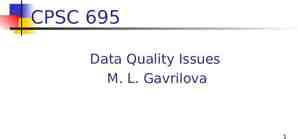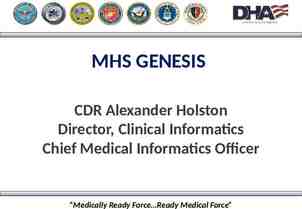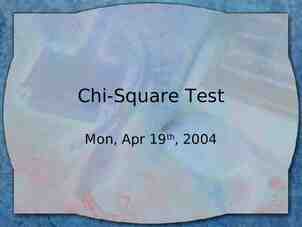Richland County Safety Council BWC Pharmacy Program Drug
24 Slides980.50 KB

Richland County Safety Council BWC Pharmacy Program Drug Utilization Management Outcomes May 21, 2015 John Hanna, R.Ph. BWC, Pharmacy Director 06/04/23 BWC Pharmacy Program Overview 1

Discussion Overview 06/04/23 The BWC Pharmacy Program & Mission How the Mission is Accomplished Impact on Drug Utilization - 2014 Impact on Opioids – 2010 - 2014 Mission Focus Going Forward BWC Pharmacy Program Overview 2

The BWC Pharmacy Program 2014 vs 2010 50,022 Injured Workers received an Rx (-26%) 990,369 Prescriptions covered (-36%) 113.4M total prescription cost (-16%) – Average Unit cost/Rx 114.52 ( 8.2%) – Average Rx Cost/Injured Worker 2,185.86 ( 13.7%) Generic Dispensing Rate 83.4% ( 4.8% vs ‘13) – Each 1% Increase in GDR 3.35M cost savings 06/04/23 BWC Pharmacy Program Overview 3

The Pharmacy Program Mission Manage drug utilization to ensure coverage for necessary medications to allow proper care of injured workers in a fiscally responsible manner. 06/04/23 BWC Pharmacy Program Overview 4

The Pharmacy Tools Formulary Relatedness Drugs & Prior Authorization Requirements Drug Utilization Reviews 06/04/23 BWC Pharmacy Program Overview 5

The BWC Formulary (OAC 4123-6-21.3) Implemented Sept. 1, 2011 Revisions – 2011 thru 2014 o Limited coverage of muscle relaxants o Deleted coverage of some IR & SR opiates o Introduced tiered coverage for all SR opiates o Designated a class generic for anti-ulcer agents

Formulary Revisions 2011 thru 2014 o Set a maximum daily dose for both antianxiety and butalbital containing drugs o Limited coverage to 4 hypnotics o Limited coverage of anti-psychotics o Limited coverage of testosterone agents o 2014 o Added coverage for 7 new drugs o Deleted coverage for 2 drugs 06/04/23 BWC Pharmacy Program Overview 7

Formulary Impact: Drug Utilization 2014 vs 2010 o24% fewer Injured workers received opioids o Opioid prescriptions (-38%) o 48% fewer Injured workers received muscle relaxants oMuscle relaxant prescriptions (-72%) o79% fewer injured workers received anti-ulcer drugs oAnti-Ulcer prescriptions (-83%) 06/04/23 BWC Pharmacy Program Overview 8

Formulary Impact: Drug Costs 2014 vs 2010 Total drug costs: - 22.8 million (-16.8%) oOpioids: - 19.9 million (-36%) oMuscle relaxants: - 2.8 million (-78%) oAnti-ulcer drugs: - 6.4 million (-95%) 06/04/23 BWC Pharmacy Program Overview 9

Automated Rx Edits: Relatedness List Drugs In 2014 Automated Edits Applied in the pharmacy on all Rxs Stopped initial coverage of 235,000 Rxs Relatedness List Edits May require a PA Apply to 373 of 405 drug classes Matches drug indication & allowed conditions 3900 PAs processed by the PBM Pharmacists 4400 PAs processed by BWC staff 06/04/23 BWC Pharmacy Program Overview 10

Automated Rx Edits: Formulary & Special Claim Edits Rxs for certain formulary drugs require a PA SR Opioids, Muscle Relaxants, Testosterone Some require an allowance – Fentora, Lidoderm,Suboxone Special Claims Edits Medical Only Claims All require a PA after 60days from DOI Claims with no prescriptions for 270 days Require a PA for any prescription 06/04/23 BWC Pharmacy Program Overview 11

Drug Utilization Reviews 2014 BWC-MCO Workgroup Recommendation Transition this activity to the MCOs DUR workgroup began work in June New process developed Pilot of new process began in November 2014 Transition to all MCO’s 7/1/2014 4192 DURs performed by BWC/MCOs in 2010 2664 DURs performed by MCOs in 2014 06/04/23 BWC Pharmacy Program Overview 12

Injured Workers Receiving Medications 2001 to 2014 06/04/23 BWC Pharmacy Program Overview 13

Injured Workers Receiving Opioids 2001 - 2014 06/04/23 BWC Pharmacy Program Overview 14

Opioid Utilization 2001 - 2014 06/04/23 BWC Pharmacy Program Overview 15

Opioid Utilization 2001 - 2014 06/04/23 BWC Pharmacy Program Overview 16

BWC Opiate Utilization 2010 vs. 2014 o BWC’s opiate dependency guideline: 60mg MED/Day for 60 days o In fourth quarter 2010 8,689 injured workers received this dose of opiates 13% of all injured workers receiving medications in 2010 were opiate dependent. 17% of of injured workers receiving opioids o In fourth quarter 2014: 5,469 injured workers met it; 11% of all injured workers receiving medications. 16% of injured workers receiving opioids 06/04/23 BWC Pharmacy Program Overview 17

Top 10 Highest Opiate Prescribers 2010 vs. 2014 High dose opiate prescribers - 4th quarter 2010 High dose opiate prescribers - 4th quarter 2014 Prescriber Patients with total Mg MED/day 399 Patients with total Mg MED/day 400 - 799 Dr. A 36 15 4 17 Dr. B 13 8 4 1 Dr. B 24 14 4 6 Dr. K** 11 9 1 1 Dr. C 17 14 2 1 Dr. L 11 11 Dr. D* 13 11 2 Dr. M 7 6 1 Dr. E* 12 6 1 Dr. N 6 4 1 Dr. F 12 10 2 Dr. O 6 6 Dr. J* 11 5 5 Dr. P 6 5 1 Dr. H 9 9 Dr. Q 6 5 1 Dr. I 8 7 Dr. A** 5 1 3 Dr. J* 8 8 Dr. W 5 5 06/04/23 Patients Patients with total with total Mg Mg MED/day MED/day 800 - 999 999 5 1 1 Prescriber BWC Pharmacy Program Overview Patients Patients Patients Patients with total with total with total with total Mg Mg Mg Mg MED/day MED/day MED/day MED/day 399 400 - 799 800 - 999 999 1 1 18

Acute to Chronic Opioid Use In New Claims Date of Injury (DOI) 2011 vs. 2013 IWs with DOIs in 2011 IWs that received RX prior to July 2012 IWs with "acute" opiate script (RX with 28 days) Percent of 2011 Totals total IWs with DOIs in 2013 8,448 IWs that received RX Prior to 7-2014 6,001 4,754 56% IWs with acute opiate script ( RX with 28 days) 3,452 58% -27% 2,755 46% -39% 863 14% -44% IWs with ongoing opiate script (RX after 84 days) 4,483 53% IWs with ongoing opiate script (RX after 84 days) IWs with acute and ongoing opiate Rx after July 2012 1,531 18% IWs with acute and ongoing opiate Rx after July 2014 06/04/23 Percent of 2013 Totals total 2011 vs. 2013 Percent change BWC Pharmacy Program Overview -29% 19

2011 vs 2014 Opioid Dependence (Injured Workers Above 60mg MED/Day) 06/04/23 BWC Pharmacy Program Overview 20

Opioid Use By Age of Injured Worker 2011 -2014 06/04/23 BWC Pharmacy Program Overview 21

Percentage of Opioid Use By Injured Worker Age Q4-2011 vs Q4-2014 06/04/23 BWC Pharmacy Program Overview 22

Going Forward o Implement an automated process to identify high risk medication regimens and trigger direct clinical staff contact with the prescriber. o Establish an opioid prescribing rule based on best clinical practices for both prescribing as well as discontinuing these drugs. o Initiate a retail pharmacy based medication therapy management program to coordinate medications in high risk claims. 06/04/23 BWC Pharmacy Program Overview 23

Thank You! Questions?






